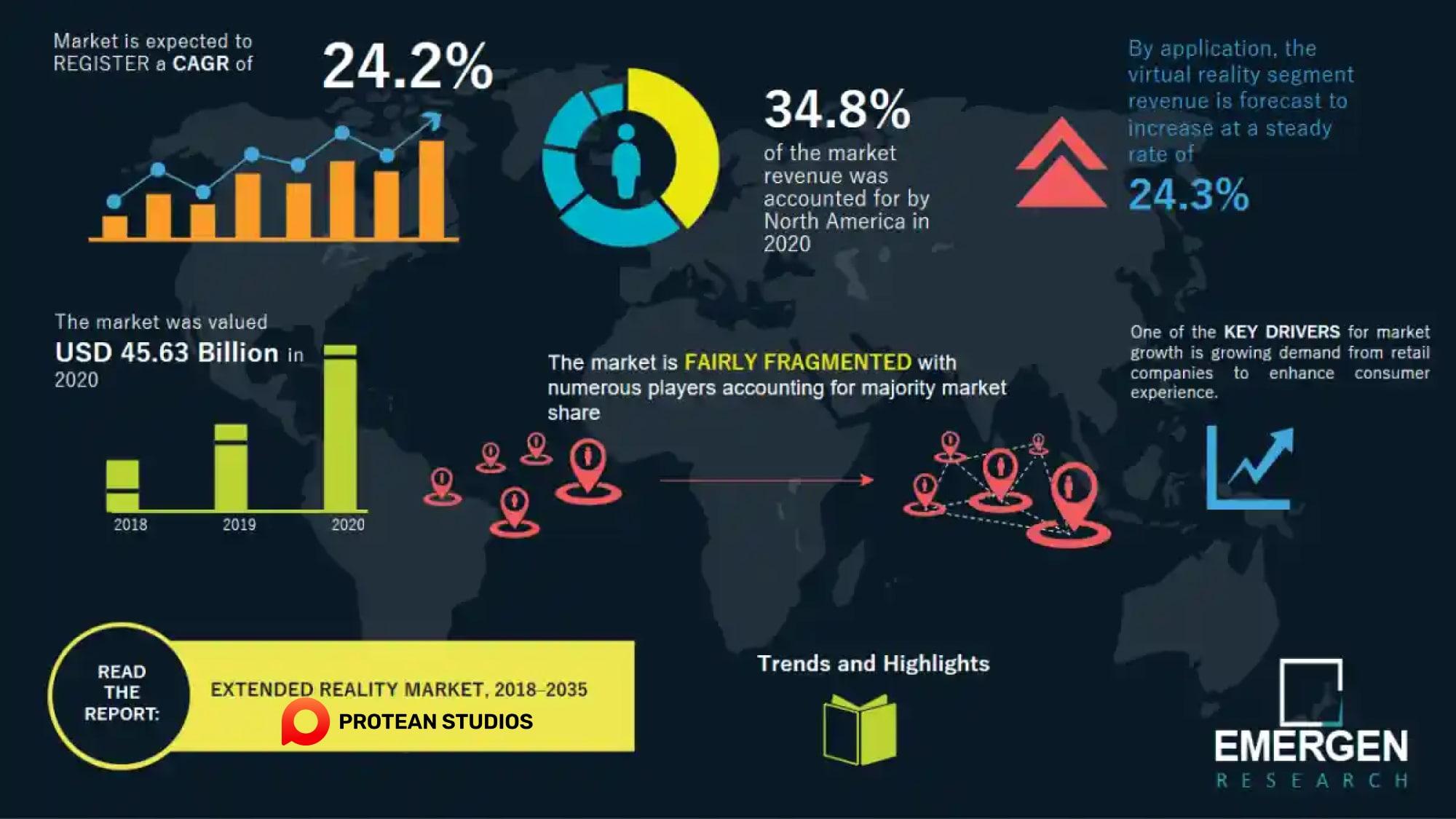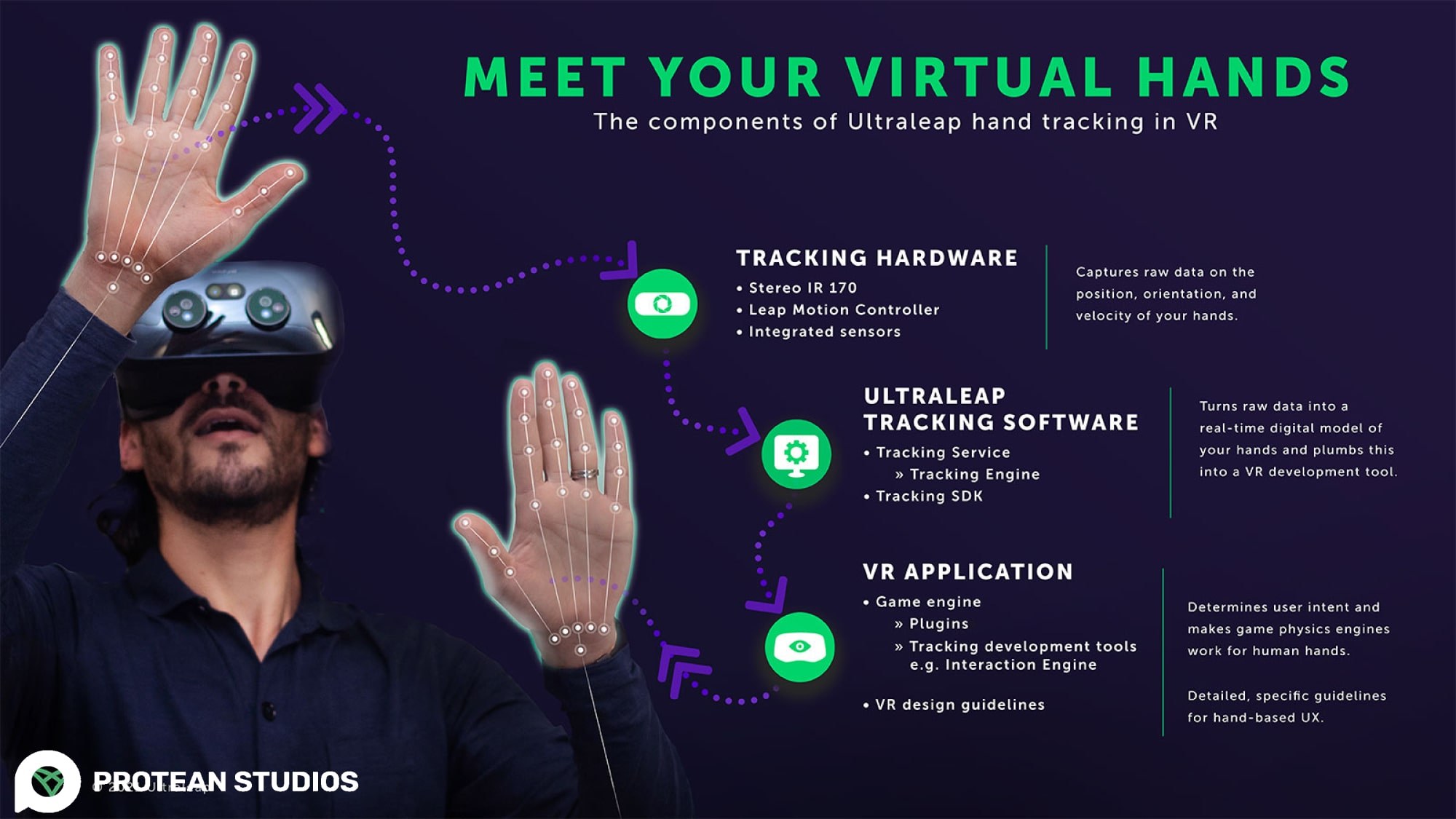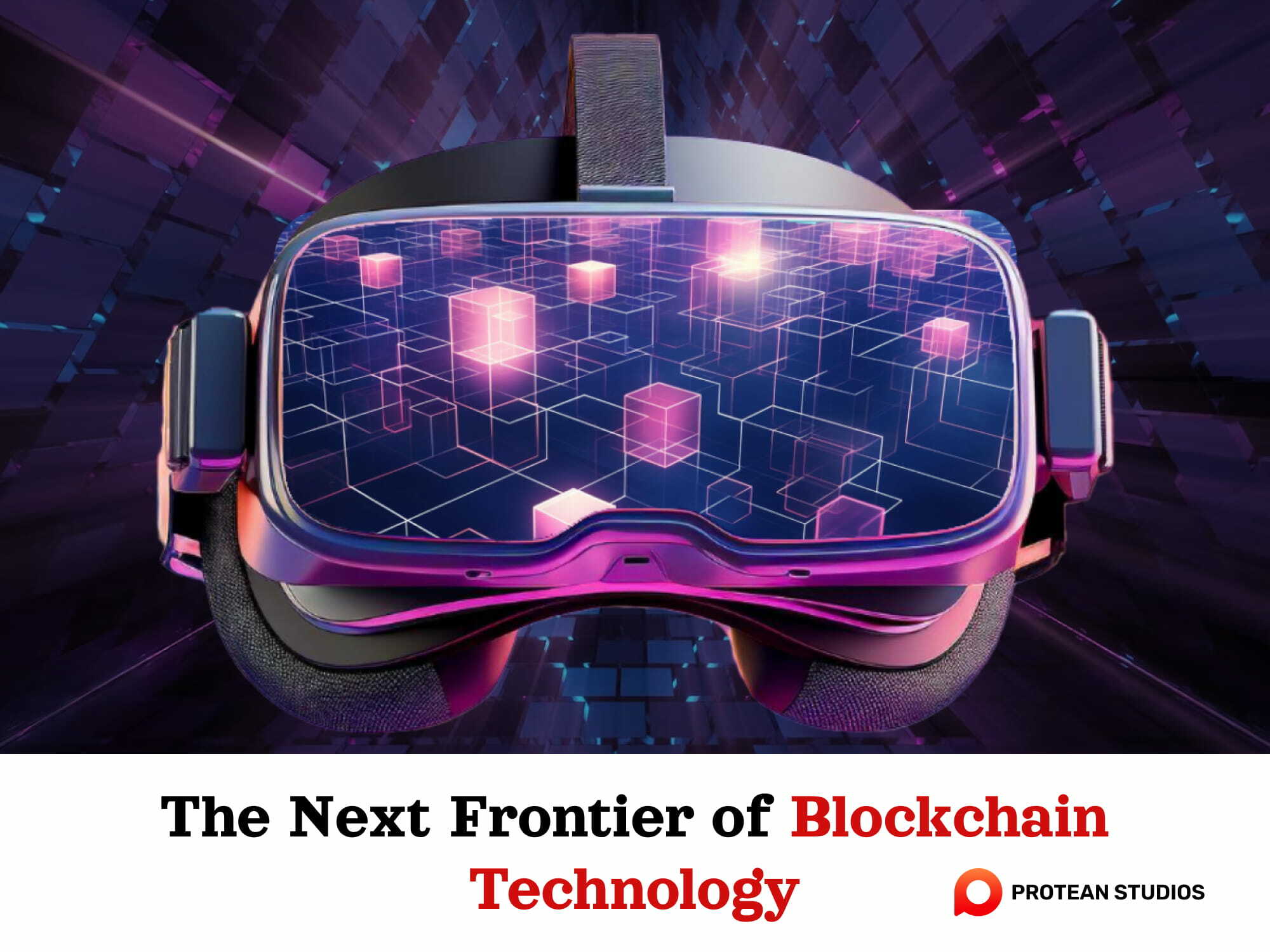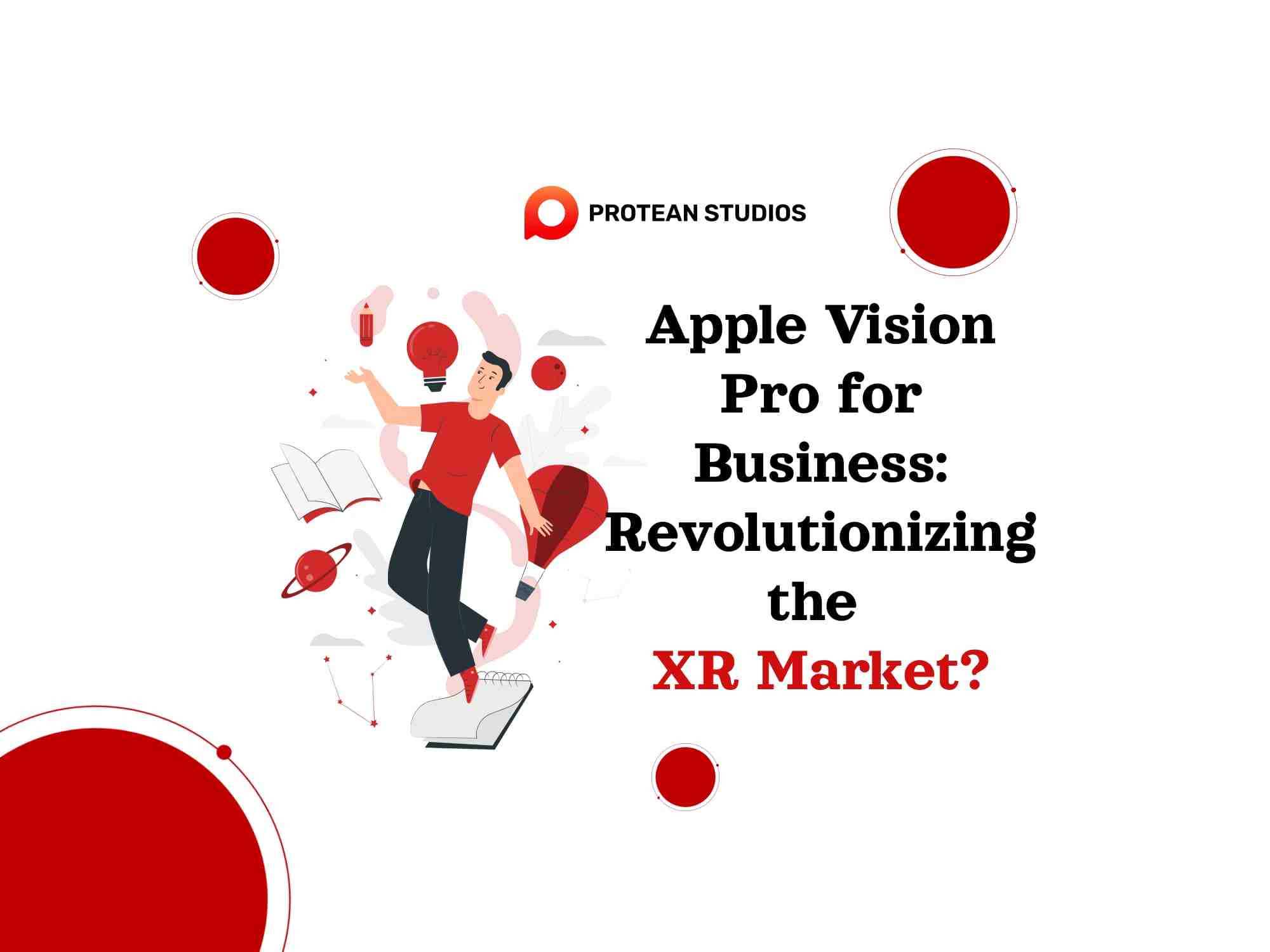The introduction of Apple Vision Pro has sent ripples through the technology industry, promising to usher in a new era of augmented reality (AR). While designed for personal use, its potential applications in the business realm are vast and exciting.
This exploration will examine how Apple Vision Pro could revolutionize various aspects of the corporate landscape, from enhancing employee training and collaboration to streamlining workflows and improving customer experiences. By understanding the capabilities of this cutting-edge device, businesses can assess its potential to drive innovation and gain a competitive edge.
1. Apple’s Mixed-Reality User Interface
Apple's Vision Pro seeks to redefine the mixed reality (MR) experience by introducing a gesture-based interface supported by dictation and eye tracking, moving away from the traditional controller-based interactions. Most MR headsets today use controllers, providing a physical link to the virtual world with precise control and haptic feedback. This precision is essential for many use cases like surgical training, military simulations, and construction, where accuracy is critical.
While the Vision Pro's interface may not match the precision of controllers, it offers the potential for greater accessibility and new ways to interact with digital content, especially in educational environments. Users could engage with content, broadening the device's appeal to a wider audience.

However, the Vision Pro's success depends on how well content can be ported and how a robust developer ecosystem forms. Apple's strong appeal is likely to attract developers eager to innovate, but building a comprehensive content library will take time. It may take even longer to see impactful use cases in enterprise and educational settings. The true value of the Vision Pro will become clear after its release.
Learn more: 25+ Best Sites for Software Reviews, Comparisons, and Product Discovery
2. Ergonomics
As expected from Apple, the Vision Pro aims to combine sleek design with ergonomics. Apple has always focused on making products that not only look high-end but also feel natural and comfortable to use.
While we won't know for sure until the headset is released and tested, details suggest that the Vision Pro is designed to minimize user fatigue. With its contoured edges, balanced weight distribution, and premium materials chosen for both style and comfort, Apple seems intent on setting a new standard for comfort in XR headsets.
3. Battery Life
In a world where long, uninterrupted use is often expected, the Vision Pro's two-hour battery life is a major drawback. This limitation becomes even more noticeable when compared to competitors like the Vive Focus 3, which offers hot-swappable batteries for extended use.
While two hours might be enough for brief sessions, like individual tasks or presentations, it falls short for longer activities like collaborative projects or all-day events. In these cases, the Vision Pro wouldn't be the first choice.
4. Integration and Ecosystem
Apple's devices have always worked best when connected to others in their ecosystem, so it's no surprise that the Vision Pro will need to be paired with at least an iPhone.
For businesses already using Apple's OS, this means an easy transition into the world of XR if they decide to adopt the Vision Pro. However, companies that rely on Windows OS face a choice: either invest in Apple's ecosystem or skip the Vision Pro headset.
5. Hand Controllers and Hand Tracking
The Vision Pro will start at $3,499 (and that's just the base price), launching next year. Given its higher cost compared to competitors, you'll need to weigh the benefits for your organization. Are the premium features worth the investment?
For industries like design, entertainment, architecture, or healthcare—where precision, high-resolution displays and a seamless user experience can be game-changers—the high price might be justified.
Apple's pricing might limit access, widening the digital divide. This could create an educational gap where only those who can afford such technology benefit from it. On the other hand, if the Vision Pro encourages more time spent in XR environments, it could accelerate training and learning opportunities. While Vision Pro offers transformative potential for some, we must consider its impact on tech accessibility and fairness in our digital age.

6. Utility: An Issue with Glasses
Most VR headsets are designed to accommodate users who wear glasses, but the Apple Vision Pro does not. Instead, users need to order custom magnetic Zeiss optical inserts, tailored for one person. These inserts attach to the lenses, so glasses aren’t needed while using the Vision Pro.
The issue? In many enterprise and educational settings, XR headsets are meant to be shared among multiple users. If employees or students who wear glasses can't use the headset, it can complicate deployment plans.
Beside, the Vision Pro’s tethered battery design could be problematic in certain environments. In settings that involve frequent movement or shared use, the cord could raise safety concerns. While this might not be a big deal for home use, in industries like manufacturing, the cord could interfere with machinery or limit mobility.
For those without roomy pockets or a bag to carry around, managing the cord could also become a hassle. It’s an interesting design choice, but it's important to consider how this cord might affect usability in different scenarios.
Other Article: Best Magazines and Blogs to Follow in the VR/AR/XR Space [2024 List]
7. Deployment Readiness
By now, we're all familiar with supply chain issues. Reports suggest Apple will only produce 130,000 to 150,000 Vision Pro units in the first year. This could make it difficult for companies planning large XR deployments, as they might have to compete with adopters to get their hands on enough units.
Recent events have shown how complex global production and distribution can be, and even Apple isn't exempt from these challenges. Any hiccup in the supply chain could mean delays, so while the Vision Pro is generating excitement, its widespread availability could be pushed back by weeks or even months.
Even when it becomes available, businesses will need time to apply it. Adopting the Vision Pro isn’t just about buying the headset. Companies will need to integrate it with existing systems, train staff, and adjust workflows to handle maintenance, content downloads, and other logistics.
While we don't have all the details yet, it's important to keep these factors in mind. Remember, rolling out XR technology is a phased process, not something that happens overnight.




